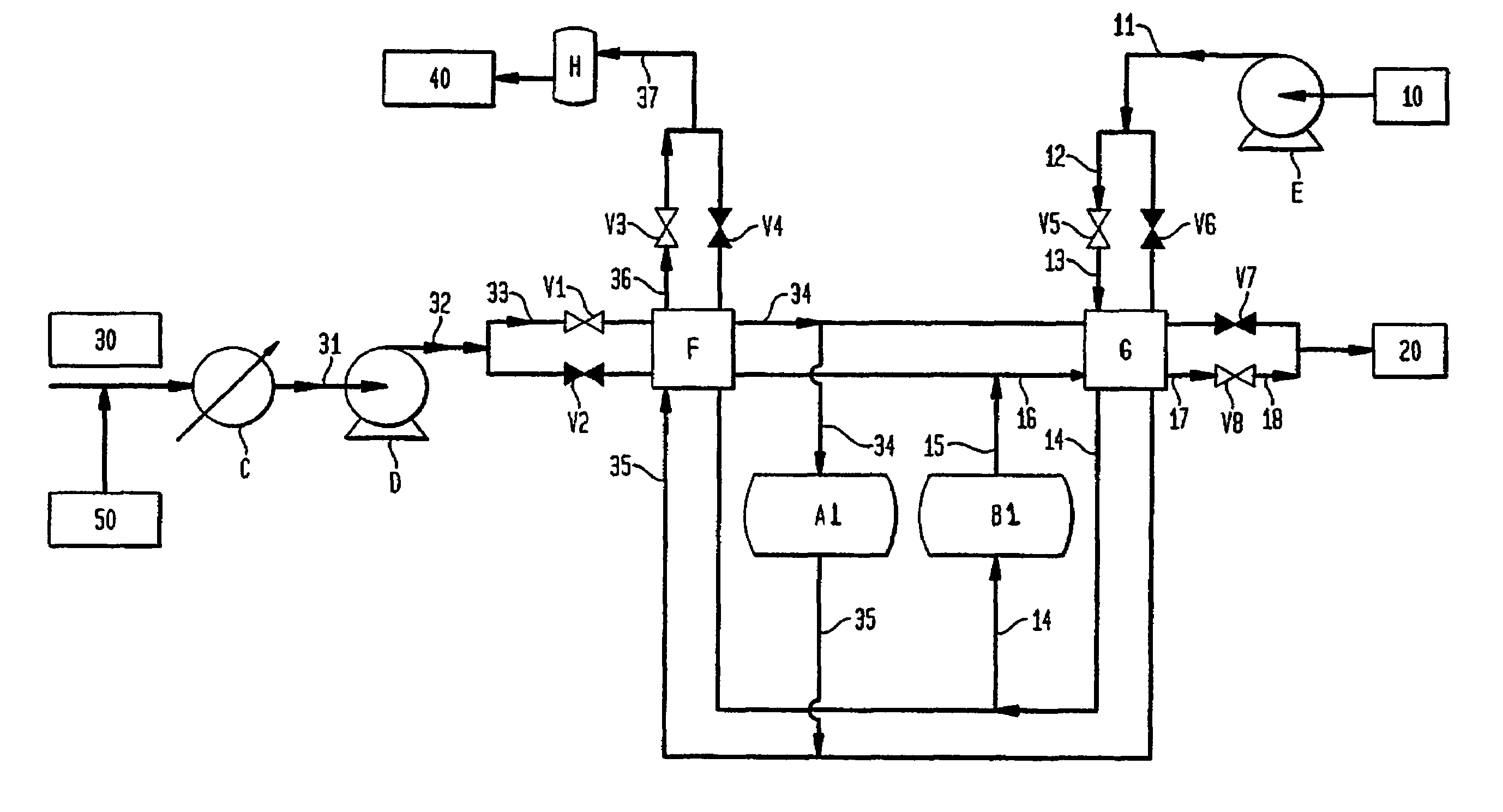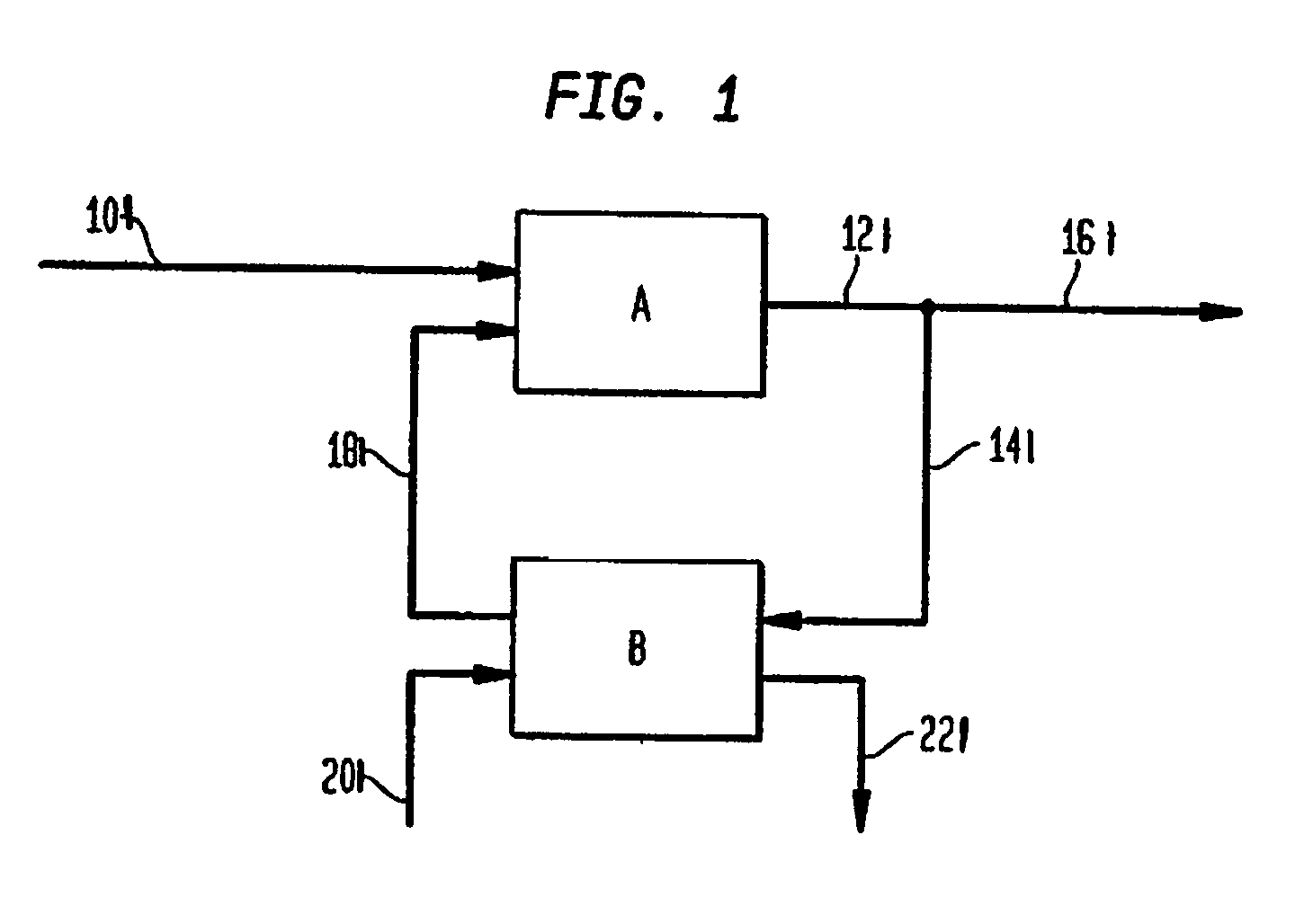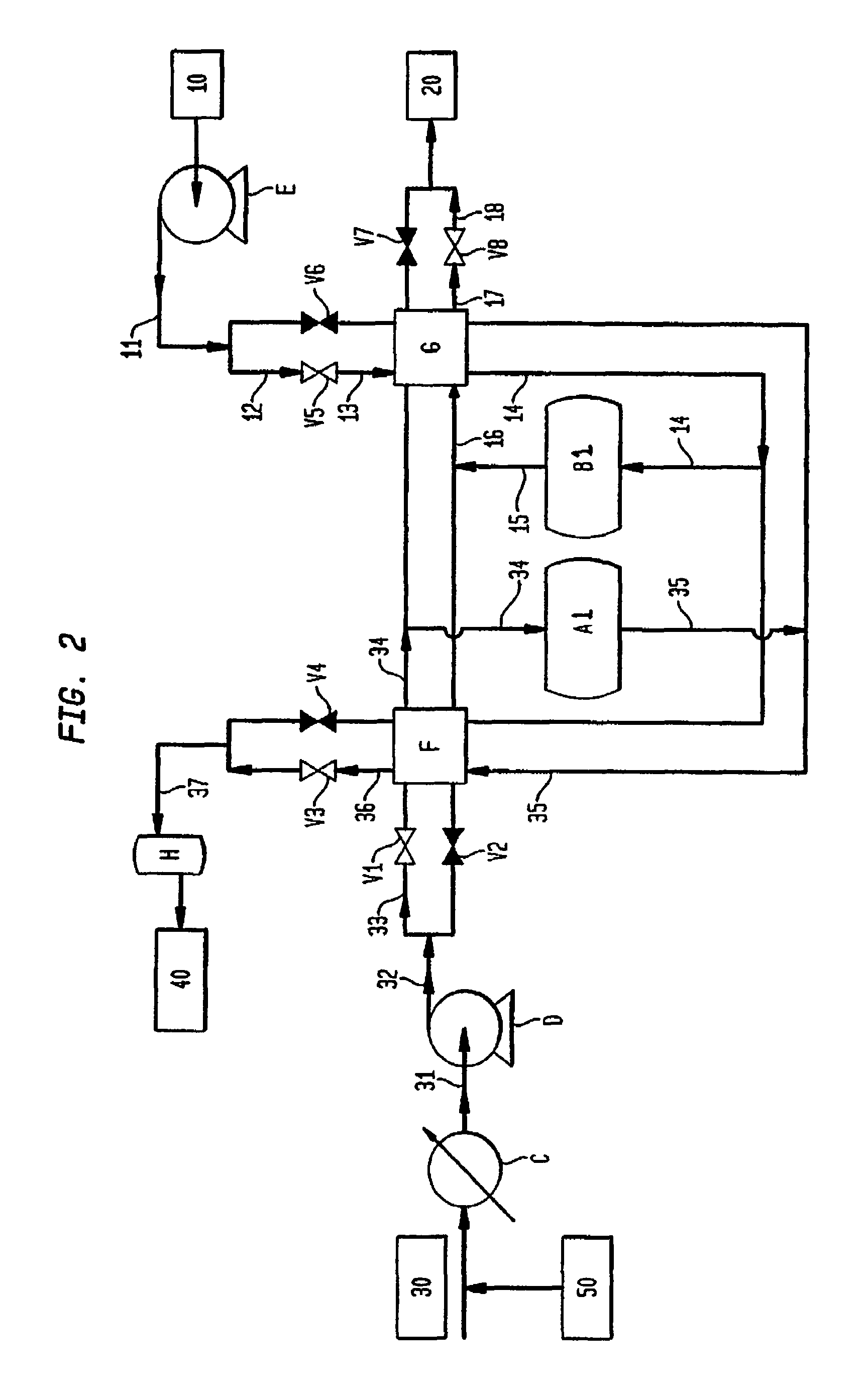Oxy-fuel combustion process
a combustion process and oxyfuel technology, applied in the direction of combustion types, separation processes, lighting and heating apparatuses, etc., can solve the problems of increasing heat loss, nitrogen oxides (nox), and nox, and not benefiting the combustion process
- Summary
- Abstract
- Description
- Claims
- Application Information
AI Technical Summary
Benefits of technology
Problems solved by technology
Method used
Image
Examples
example 1
Preparation of La0.2Sr0.8Co0.6Fe0.4O3−δ Perovskite Powder
[0065]The powder of perovskite-type oxide was prepared first by mixing of corresponding metal oxides or hydroxides and then repeated steps of sintering, ball-milling and filtration for three times. The temperatures in 3 sintering steps were, respectively, 900° C., 950° C. and 1000° C., and the sintering time was 8 hours. The first sintering was conducted right after dry-mixing of La2O3, Sr(OH)2.8H2O, Ni2O3, Co2O3 and Fe2O3. The ball milling of the material was carried out with grinding media and water after each sintering. The solid was collected by filtration after ball milling. The filtration cake was dried at 100° C. for overnight before it was subjected to the next sintering. After the last ball-milling, the dried filtration cake was crushed and ground into fine powder. The final powder had a perovskite-type phase structure.
example 2
Fabrication of La0.2Sr0.8Co0.6Fe0.4O3−δ Perovskite Extrudates
[0066]The perovskite-type oxide powder made in Example 1 was transformed into a slurry after addition of about 5 wt % hydroxyethyl cellulose and 14.5 wt % water. Thus obtained slurry was aged overnight before it was loaded into an extruder and transformed into extrudates (3 mm in diameter and 4 mm in length). The extrudates were dried in an oven at 90° C. for about 2 hr, and then calcined at 600° C. for 5 hr. The extrudates were finally sintered at 1050° C. for 8 h. The final extrudates were porous and mechanically strong.
example 3
[0067]The extrudates made in Example 2 were packed in a tubular reactor made of high temperature metal alloy. The reactor was designed in such a way that the gas streams of air, CO2 and steam could be fed into the reactor from either the top end or the bottom end of the reactor as required. Mass flow controllers controlled the flow rates of the gas streams. The reactor temperature and valves were controlled with PLC. The product and waste streams during purge and retention steps were collected in a tank, and their average compositions were analyzed with a gas analyzer and a GC. In the experiment, the reactor temperature was controlled at 825° C. An air stream at 7.6 slpm and a CO2 stream at 4.7 slpm were alternately fed into the reactor for every 30 seconds in a counter-current fashion. The reactor pressures were kept at 23.7 psia and 18.7 psia respectively during air and CO2 steps. During the last 2 seconds of the air step, the reactor pressure decreased from 23.7 psia to 18.7 psia...
PUM
| Property | Measurement | Unit |
|---|---|---|
| temperature | aaaaa | aaaaa |
| temperature | aaaaa | aaaaa |
| temperatures | aaaaa | aaaaa |
Abstract
Description
Claims
Application Information
 Login to View More
Login to View More - R&D
- Intellectual Property
- Life Sciences
- Materials
- Tech Scout
- Unparalleled Data Quality
- Higher Quality Content
- 60% Fewer Hallucinations
Browse by: Latest US Patents, China's latest patents, Technical Efficacy Thesaurus, Application Domain, Technology Topic, Popular Technical Reports.
© 2025 PatSnap. All rights reserved.Legal|Privacy policy|Modern Slavery Act Transparency Statement|Sitemap|About US| Contact US: help@patsnap.com



